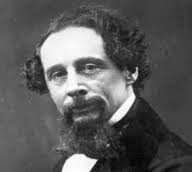
Born: Not Found
Died: Not Found
Region: Not Found
Address: Not Found
Biography:
Charles Dickens was born in 1812 near Portsmouth where his father was a clerk in the navy pay office. The family moved to London in 1823, but their fortunes were severely impaired. Dickens was sent to work in a blacking-warehouse when his father was imprisoned for debt. Both experiences deeply affected the future novelist. In 1833 he began contributing stories to newspapers and magazines, and in 1836 started the serial publication of Pickwick Papers. Thereafter, Dickens published his major novels over the course of the next twenty years, from Nicholas Nickleby to Little Dorrit. He also edited the journals Household Words and All the Year Round. Dickens died in June 1870.
33.00 GEL
55.00 GEL
20.10 GEL
33.50 GEL
15.30 GEL
25.50 GEL
15.30 GEL
25.50 GEL
In 1827 and 1828, the 15-year-old Dickens found work as a junior clerk at the law office of Ellis and Blackmore—but instead of brushing up on legal work to eventually become a lawyer, he voraciously studied the shorthand method of writing developed by Thomas Gurney. The skill allowed him to begin working as a reporter in the 1830s covering Parliament and British elections for outlets like the Morning Chronicle.
The phrase “what the dickens,” first mentioned in Shakespeare’s The Merry Wives of Windsor, was a euphemism for conjuring the devil. In his book Other Dickens: Pickwick to Chuzzlewit, author John Bowen explained the name “was a substitute for ‘the devil,’ or the deuce (a card or a dice with two spots), the doubling of the devil in short.” Dickens allegedly used the pseudonym Boz to deflect any unseemly comparisons to Satan, but once his real name was revealed and the public became familiar with his work, Dickens ended up keeping the then-200-year-old phrase en vogue.
Though any indication he might have suffered from epilepsy isn’t corroborated by contemporary medical records, he did return to the neurological disorder enough times in his work that some speculate that he might have drawn from his own experiences with seizures. Characters such as Guster from Bleak House, Monks from Oliver Twist, and Bradley Headstone from Our Mutual Friend all suffered from epilepsy.
In 1850, Dickens began editing a weekly magazine, Household Words, to which he also contributed short fiction and serialized novels. In one of his first stories for the magazine, “A Christmas Tree,” Dickens described his earliest muse as the main character in the fairytale Little Red Riding Hood—perhaps as a way of dealing with his own childhood innocence devoured by unexpected evils. “She was my first love,” he wrote. “I felt that if I could have married Little Red Riding-Hood, I should have known perfect bliss. But, it was not to be.”
Not to be outdone by the likes of William Shakespeare, Dickens was the other British writer known to create words and phrases of his own. Thank Dickens for words and phrases like butter-fingers, flummox, the creeps, dustbin, ugsome, slangular, and more.
A Christmas Carol may be his most famous Christmas story, but Charles Dickens was also the author of other holiday-themed tales, like The Chimes, which, again, deals with spirits, and The Cricket on the Hearth. This story features another main character go through a Scrooge-like transformation of the heart.
Product successfully Added!

